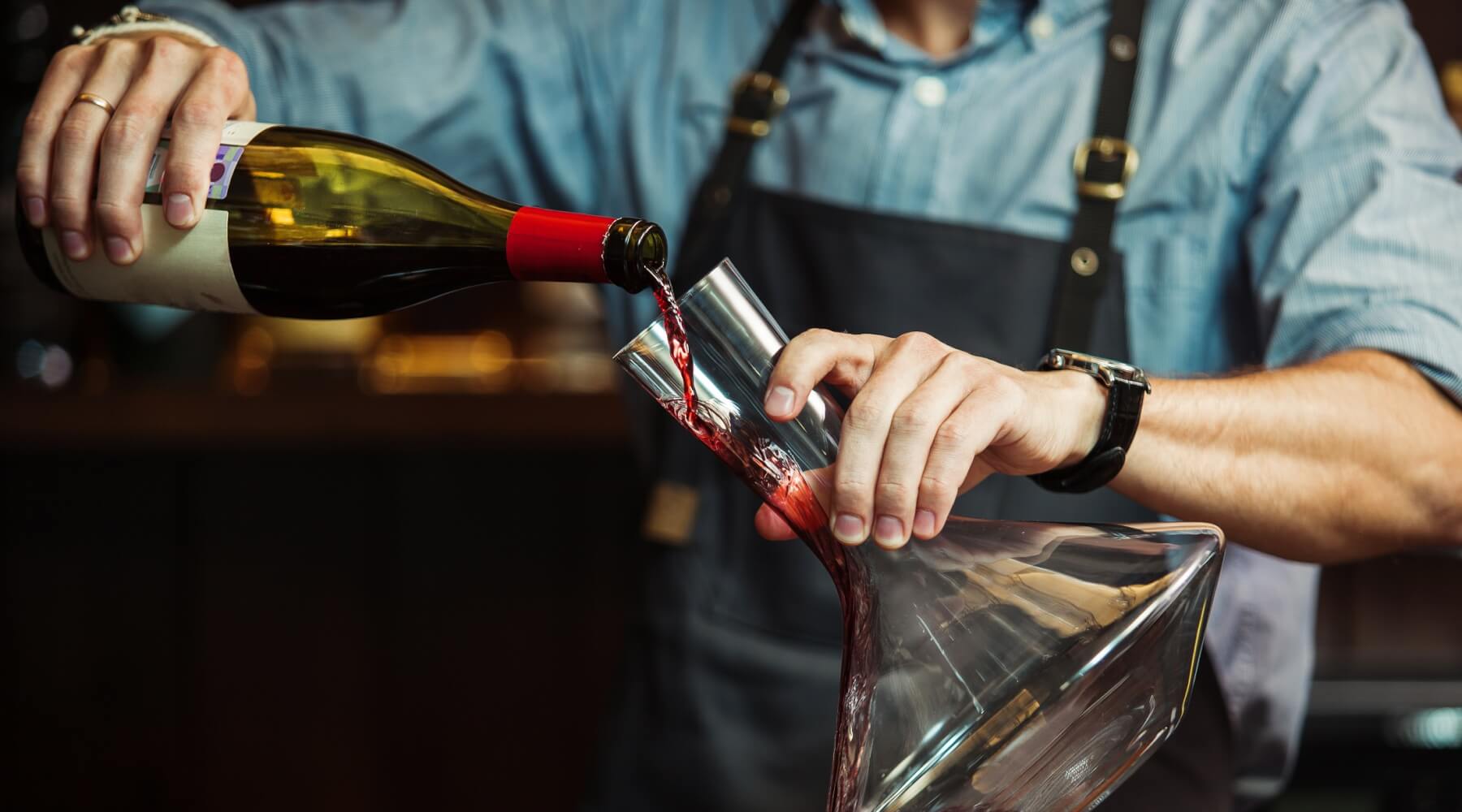Decanting
What is Decanting?
The practice of decanting has been around for thousands of years and is carried out for a multitude of reasons. Although dating back to 5000 B.C. in Syria, decanters were not commonly used until the end of the Roman Empire. Most practically Decanters are used to prevent sediment from reaching the glass which is crucial when opening an older vintage where sediment will naturally have formed over time. For the less fussy this may not be a problem…but for many of us, this could ruin the experience and mouthfeel of a highly anticipated wine carefully stored until reaching its full potential. Secondly, and most deliciously, decanting can ‘open’ the wine up. The act of aeration, encourages aroma and flavour to be released from the wine. This is not the case for all wine, as younger vintages won’t benefit as considerably as an aged wine that will invariably develop a more complex bouquet and flavour. Lastly, decanting can salvage a wine in the event of a damaged cork, fragments of cork in your glass could be arguably more unpleasant than sediment in your glass! Depending on the damage, decanting could stop any contamination but equally if the cork has disintegrated you may need to filter too.
How do I Decant?
Although different grapes and styles will reactive differently to decanting, you will need to roughly follow the same process. First you will need to stand your bottle upright for 24 hours before you want to drink it. The idea here, is to allow any sediment to settle at the bottom your bottle. Once you’re happy this has happened, open your bottle and very slowly pour into the decanter of your choice. The trick here is to keep the bottom of the bottle low to avoid disturbing any sediment from reaching the neck of the bottle. Keep your pouring steady and make sure to inspect the liquid for clarity as it enters your decanter. If any sediment reaches the top, stop pouring straight away and tilt back to an upright position until it sinks back down. Decanting wine is called an "art" because it is much easier to write about than to execute! Once you’re down to your last quarter slow your pace further and aim to leave a little bit of liquid in the bottle – now time to wait. Allow the now decanted wine to sit for at least 2 hours; this is a universal recommendation for red wine but of course depending on what wine you are decanting you may want to reduce or prolong this stage.
When should I Decant?
Decanting is avoided for sparkling wines, used in rare occasions for whites and rosés – reds are where the magic happens! Younger reds in the two most recent vintages won’t change drastically but will still benefit from the aeration process and largely become smoother and fruitier. They will only need 20-30 minutes to open up unless very tannic. Think Gamay, Zinfandel and Grenache, similarly a young Pinot Noir and Merlot don’t need much decanting time but the extra surface area exposed to oxygen will help over simply pulling the cork and exposing the neck.
In contrast, medium bodied wines or wines older than the last two vintages will need longer, depending on the grape and style, this sits in the range of 20 minutes to an hour. Malbec, Barbanera and Cabernet Franc would need 30 minutes+, with young Italians, Cabernet and old-world Syrah benefiting from even longer due to their tannic structure and more complex fruit profile – at around the hour mark tannins will soften and become less intense. Needing 1–2-hours are more full-bodied wines; Nebbiolo, Petit Sirah, Cabernet Sauvignon and Monastrell will really open up with the extended time in the decanter, their multifaceted characteristics will be released and marry together more harmoniously – perfect!
Older vintage reds are those that are most worthy of decanting, the benefits are very noticeable on drinking. Good examples of wines that will shine are; an older Barolo, a Burgundy (at least 5 years old), a Brunello and Northern Rhônes. Decanting allows these wines to show the depth and complexity that we expect them to develop. An old wine deemed as ‘mature’ or even pushing its best, you need to take extra care in order to experience all the nuances and aroma that will dissipate once in contact with oxygen, so you won’t want to decant too long before drinking. Using a source of light under the bottle will help so you can see the sediment before it’s too late!
Most white and rosé’s are usually better kept in the bottle where they stay cool and fresh. Sediment that an old white Bordeaux or Burgundy might have thrown can be seen easily. However, if your wine is reduced, where the aromatic compounds have been starved of oxygen for too long, decanting may be needed. If you smell either rotten eggs, burnt rubber or garlic on opening they will need to decant for up to 30 minutes to bring back the fruity bouquet you would expect.
Which Decanter should I go for?
Now, which Decanter to go for…They all allow your wine to breathe, but they also could be in view at your next dinner party so serve an aesthetic purpose. Once decanted, you will most likely serve out of this vessel, so it’s vital to choose a style that you’d like to see on your table. There are many styles and some are fancier than others. From Swan, Duck and doughnut-shaped classier styles to a more standard jug like shape. Knowing that as long as your wine can benefit from its exposure to oxygen anything will do as long as it’s made from a material that will not impart any flavour on the wine, which makes choosing which one down to you! After covering the basics, hopefully you can now confidently decant according to the wine you wish to drink.



